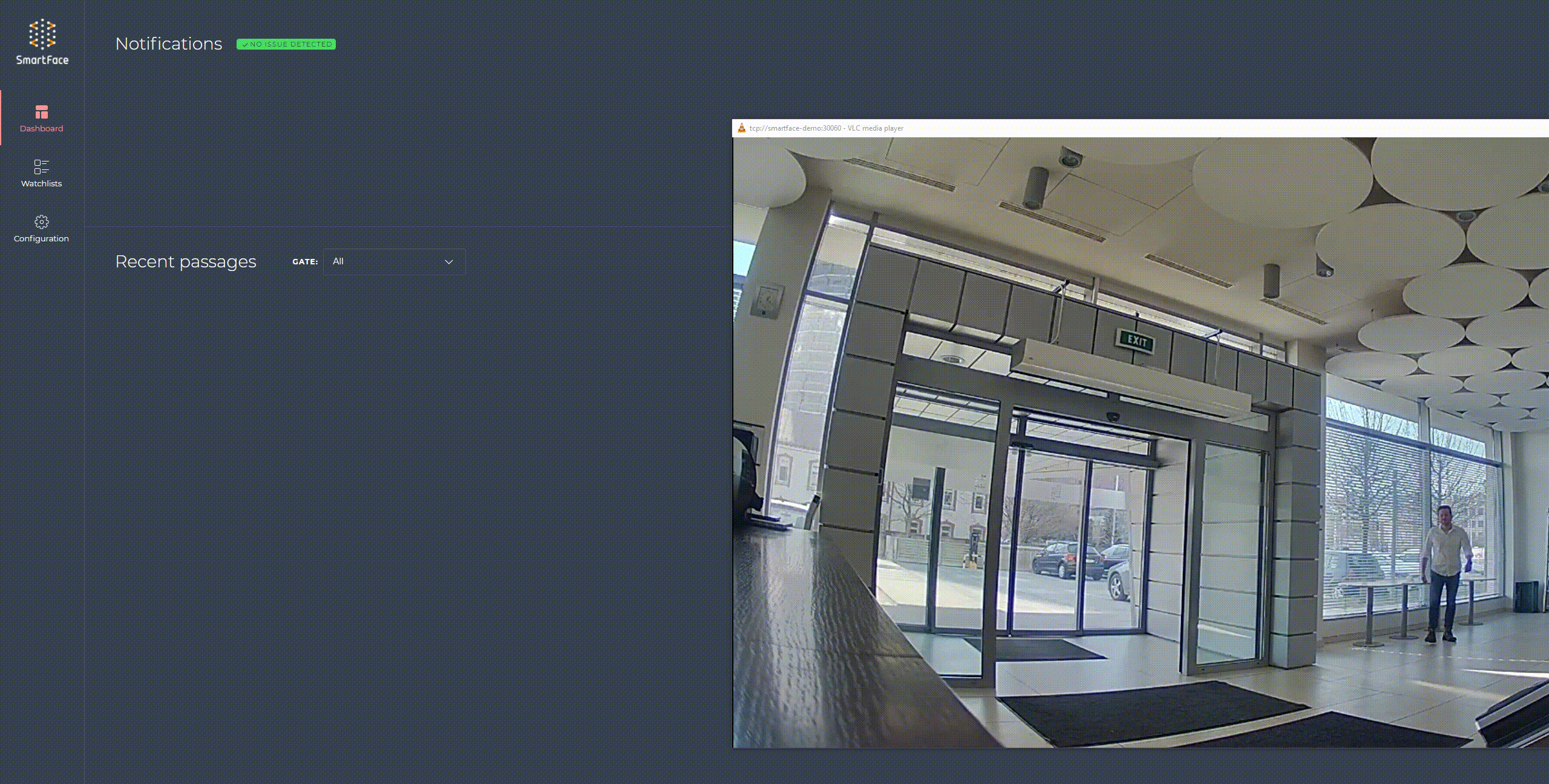Spoof detection and liveness check
SmartFace Platform performs multiple spoof checks (detection of presentation attack) using various approaches and algorithms. The goal is to detect as many types of presentation attacks as possible. For example spoofing with printed image, with photo displayed on a tablet or trimmed face masks.
Currently, you can select from two available spoof detectors:
Pose estimation spoof check
Liveness check
Pose estimation spoof check
The pose estimation spoof check is based on the position of detected body parts for the detected face. SmartFace Platform estimates certain poses and evaluates whether a person is trying to spoof the identification. This approach is based on OpenVINO model used for body parts detection.
Liveness check
The liveness check is based on our proprietary neural network that is detecting certain attributes on the image that could indicate that the person is not alive and printed image, mask or display is used.
Spoof detection
Both detectors are available at a same time, so you can use them simultaneously. When the spoof detection is enabled, it is always performed on a matched face (identified person). The feature supports an access control use case, where spoof detection is vital for the recognition of a person attempting an unauthorized access using printed image, mask or a an image displayed on a tablet, mobile phone or any other display.
The result of the spoof check is propagated in the match notification sent by SmartFace Platform. The notification can be processed by our Access Controller module and then displayed in SmartFace Station as a Notification. Your security staff can act on the Notification and solve the attempt of an unauthorized access.

The example of presentation attack performed by the printed image.